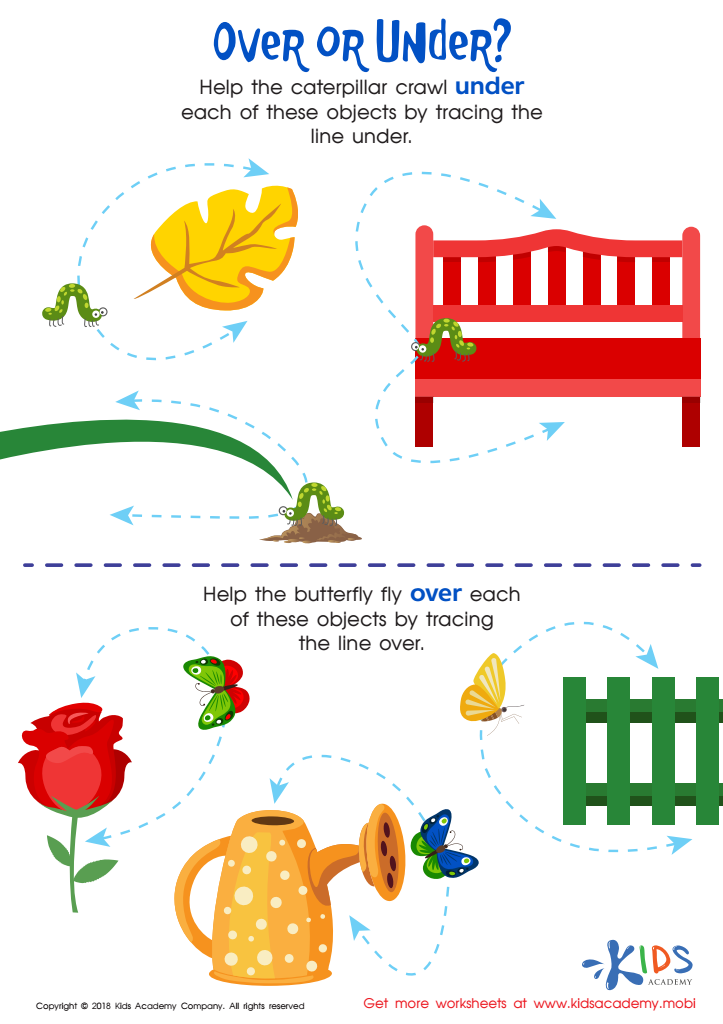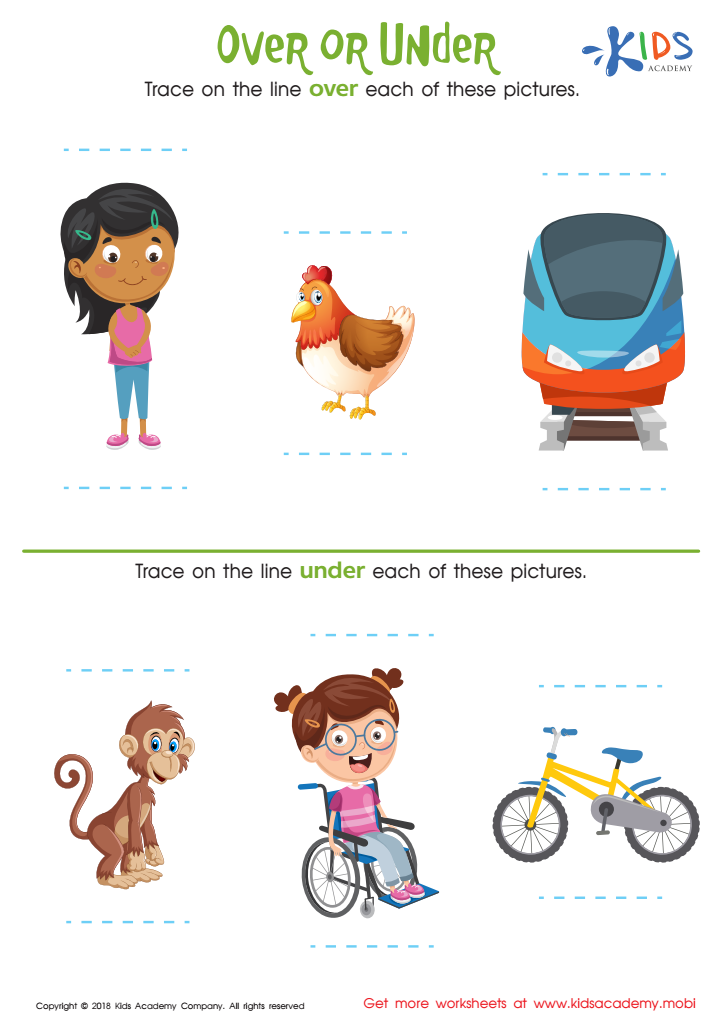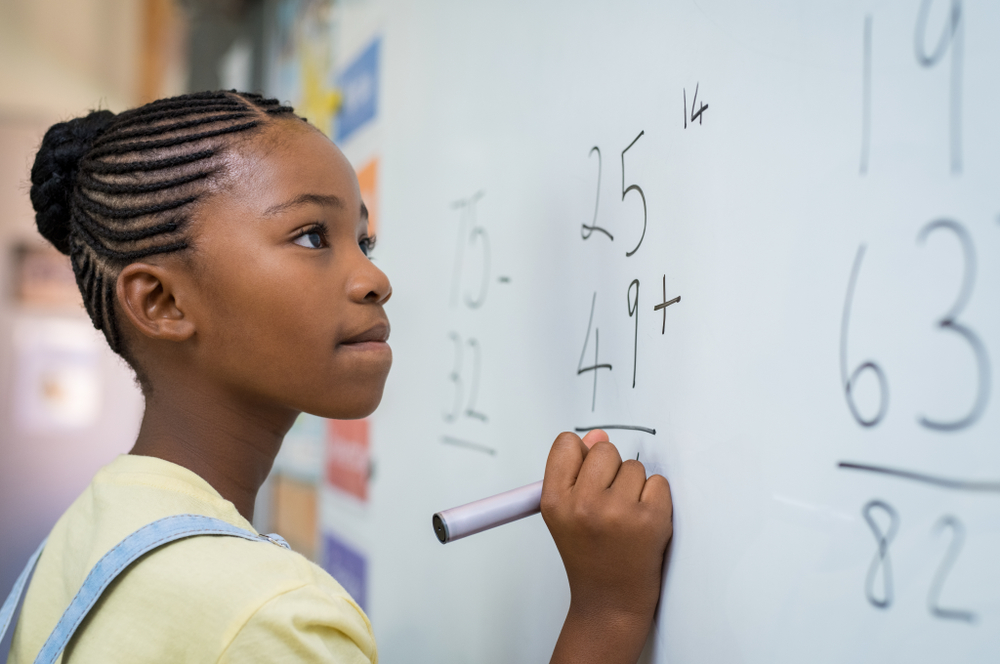Understanding prepositions Normal Math Worksheets for Ages 3-4
3 filtered results
-
From - To
Explore our "Understanding Prepositions Normal Math Worksheets" designed specifically for children aged 3-4. These engaging activities help little learners grasp essential prepositional concepts such as "in," "on," "under," and "over" through playful math exercises. Each worksheet incorporates vibrant visuals and interactive elements to captivate young minds while fostering early math skills. Parents and educators can utilize these resources to enhance children's comprehension of spatial relationships in a fun and supportive environment. Encourage your child's learning journey with our thoughtfully crafted worksheets that make mastering prepositions an enjoyable experience—setting a strong foundation for future academic success!


Over or Under? Worksheet


Over or Under Worksheet


In Front or Behind Worksheet
Parents and teachers should care about teaching prepositions during Normal Math activities for ages 3-4 because these concepts lay the groundwork for children’s cognitive and spatial understanding. Prepositions define relationships between objects, helping young learners comprehend directions, locations, and the size of items in relation to one another. For instance, using terms like “on,” “under,” “next to,” and “between” during math games encourages children to visualize these positions, fostering their ability to analyze and compare.
Additionally, incorporating prepositions into math activities promotes language enrichment and literacy development. As children engage with words that describe where things are, they expand their vocabulary and enhance their ability to communicate ideas effectively. Engaging in these early learning experiences also supports critical thinking and problem-solving skills.
Moreover, harnessing play-based learning strategies integrates cognitive and motor skills development. When children follow directions involving prepositions in active games, they strengthen their thinking networks and foundation for future learning in math, language art, and beyond.
In conclusion, understanding prepositions during Normal Math activities for ages 3-4 is crucial as it not only boosts spatial awareness but also enhances vocabulary, communication, reasoning, and overall cognitive growth in young learners.
 Assign to My Students
Assign to My Students





















